Paradise Naxos is the largest Greek island in the Central Cyclades. It provides the perfect mix of an attractive port city, easily accessible beaches, ancient ruins and a stunning landscape of blue water cliffs. It offers good connections with other islands. There are many ferry companies offering services to the Greek islands.
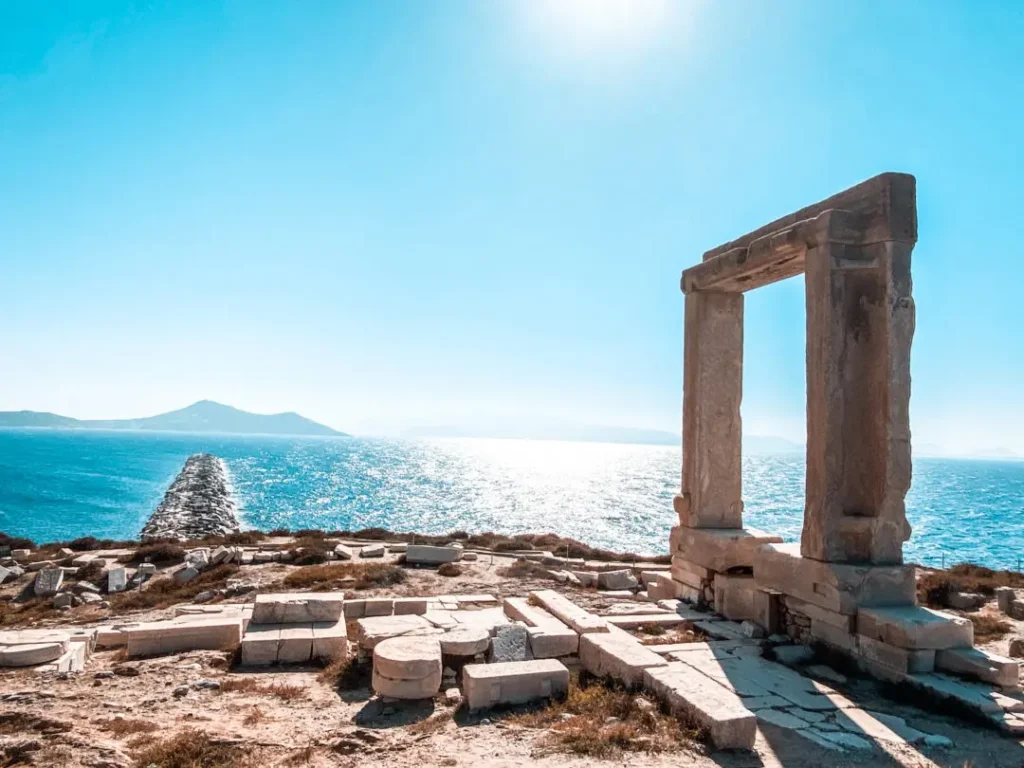
Most Interesting Ruins:
- Temple of Apollo
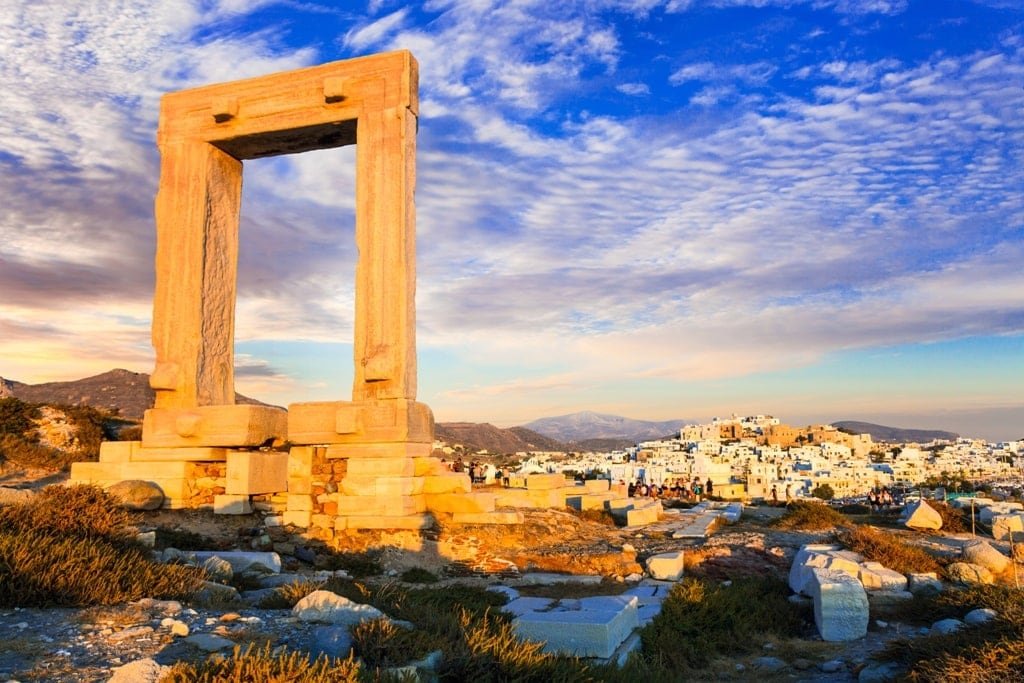
Temple of Apollo in Naxos: Portara is a massive marble door that is the symbol and main landmark of the island. This temple is an unfinished work of art that dates back to 530 BC. and is considered a miracle of ancient Greece. This massive gate is the only remaining part of the temple of Apollo and consists of four marble sections, each weighing approximately 20 tons.
- Temple of Demeter
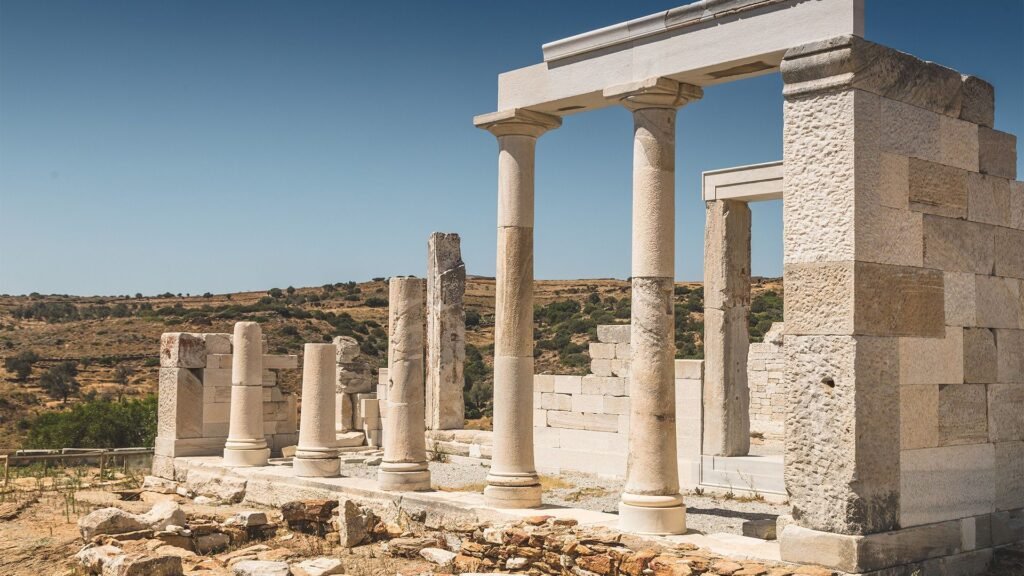
The Temple of Demeter was a temple complex dedicated to the goddess Demeter, located in the southwestern part of the island of Naxos. As a monument, it is of great historical and cultural importance. Built between 530-520 BC. made of white marble, this temple is one of the most important ancient buildings, not only in Naxos, but in all of Greece. The temple, in the Ionic order, was dedicated to the goddess Demeter, her daughter Persephone, and Apollo.
- Colossus of Dionysus (Kouros of Apollonas)
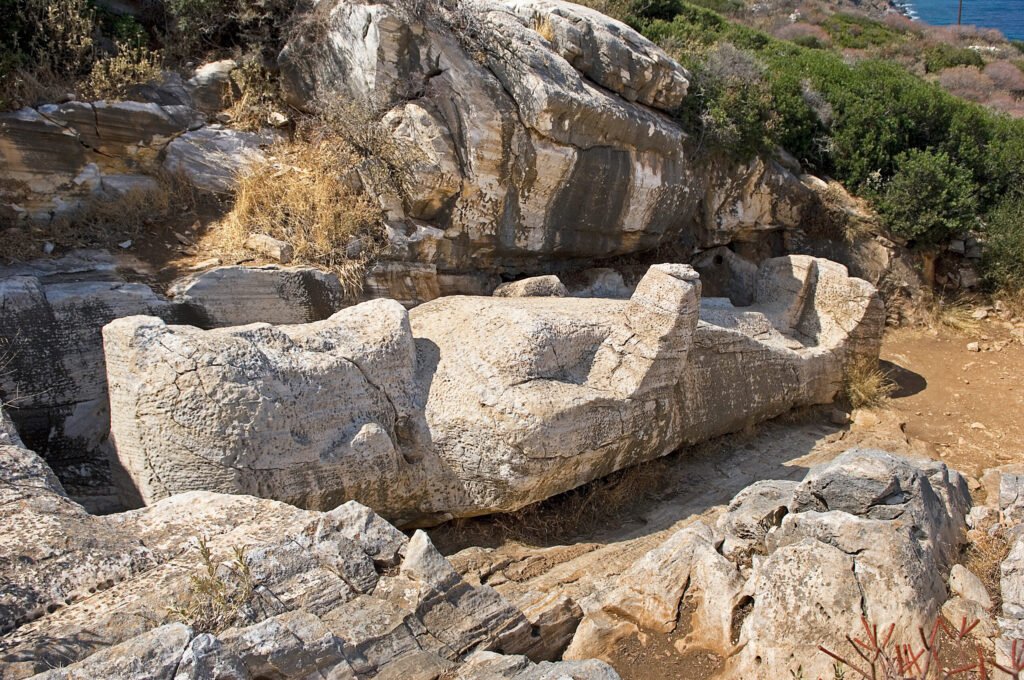

In one of the quarries near Apollonas we find the Colossus of Dionysus, a statue 10.7 meters high and weighing 80 tons, unfinished and lying on the ground. It is a kouros, a type of sculpture characteristic of the 8th-6th centuries BC, representing a young man. Like most kouroi, it was long considered a representation of Apollo. In 1932 Wilhelm von Massow identified it as a sculpture of Dionysus, hence the popular name Colossus of Dionysus.
The Most Beautiful Beaches:
- Plaka Island
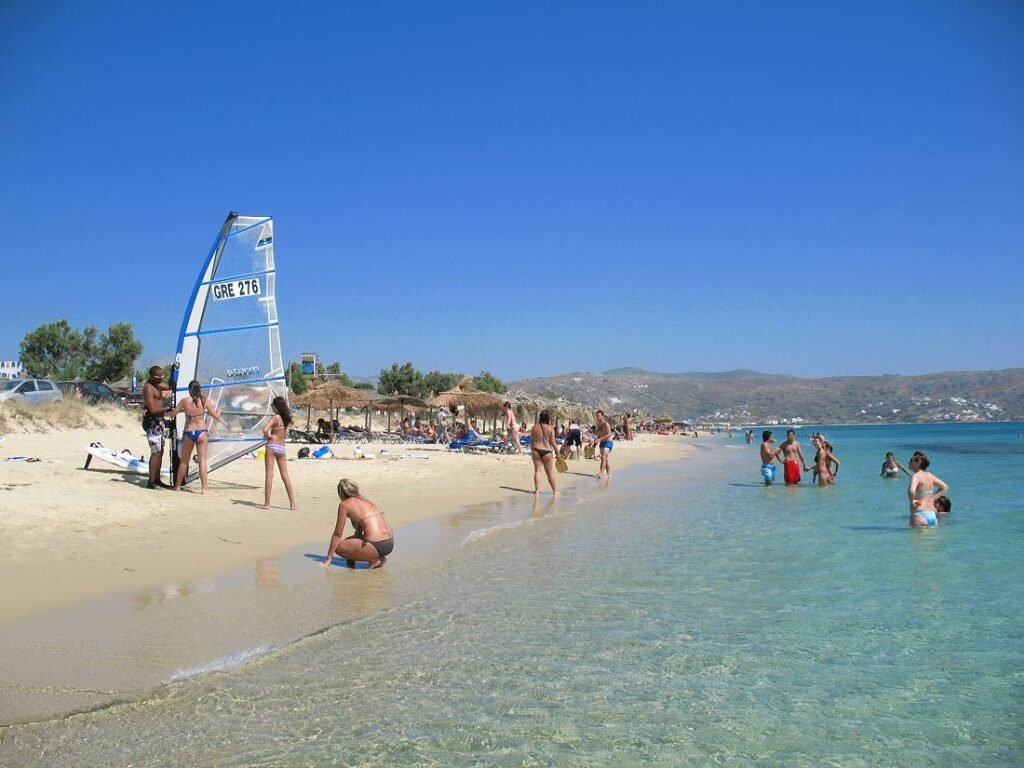
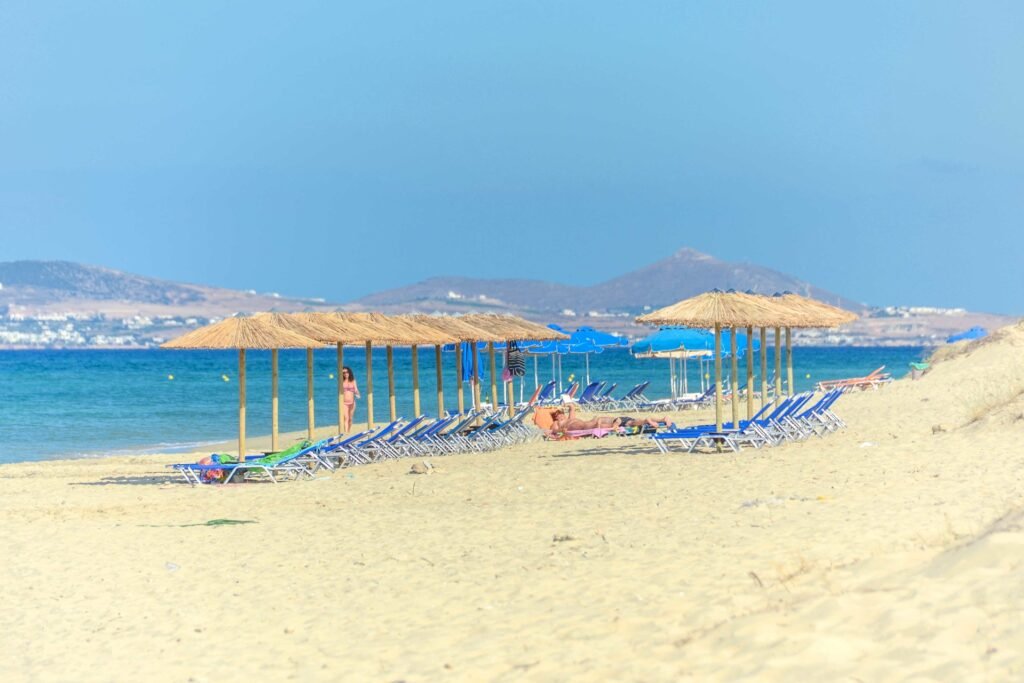
Plaka Beach is the longest beach in Naxos. It is a long, vast strip of white sand with dunes behind it. This is one of the most beautiful beaches on the island of Naxos. A vacation atmosphere with amenities where you can truly relax and listen to the sound of the ocean. Here you can enjoy the blue water and the view of Paros.
- Agios Prokopios Beach
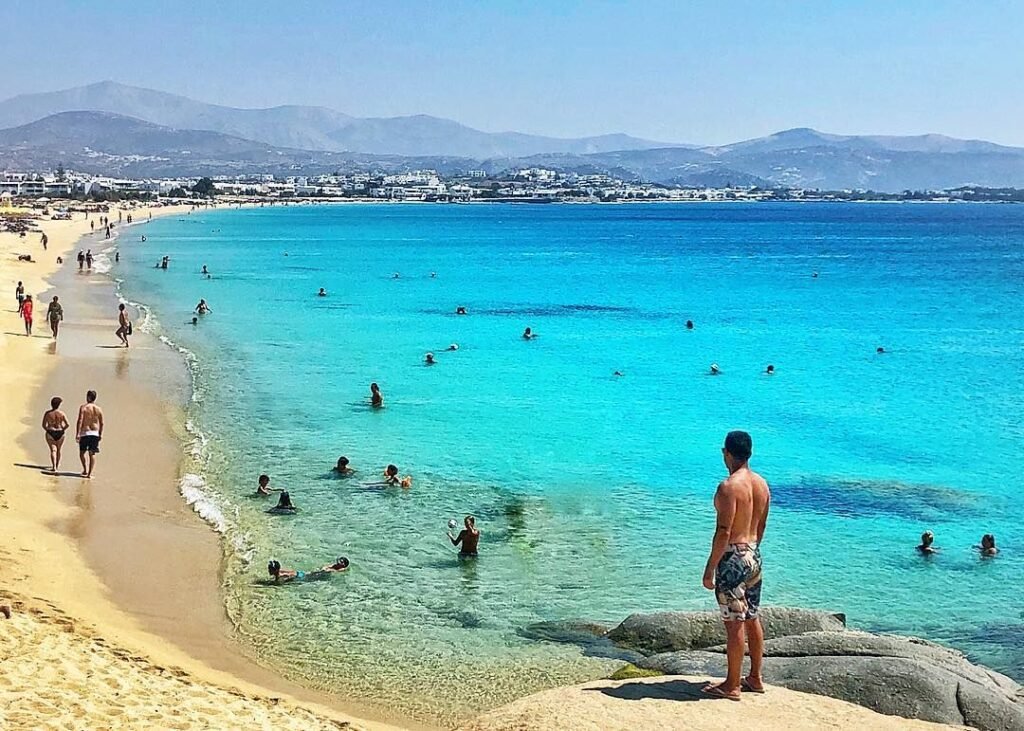

Agios Prokopios beach in Naxos is located on the western part of the island, between the beaches of Agia Anna and Agios Georgios. It is one of the most popular and beautiful beaches on the island, repeatedly awarded the Blue Flag. A beach with golden sand with opportunities for water sports, surrounded by tourist infrastructure.
- Aliko Beach (Hawaii & Kedros)
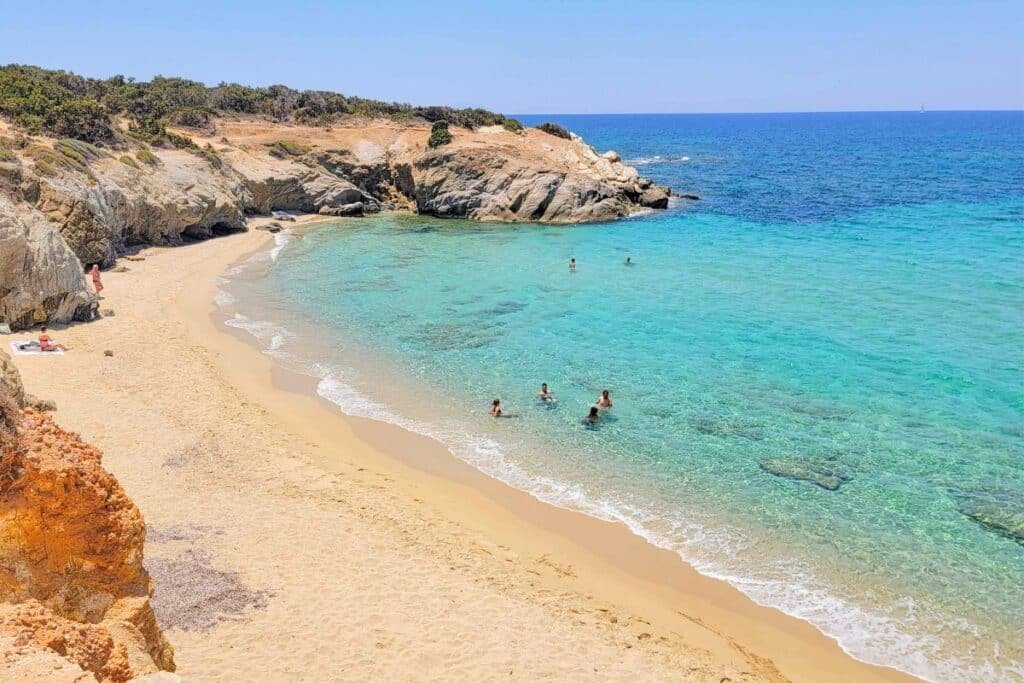

Alyko is a small peninsula on the southwestern coast of Naxos. It is about 18 kilometers from Naxos town (Chora). This area is always much less crowded than other beaches in Naxos, but is probably the most picturesque due to its varied landscape and beaches. What made it stand out were the small cliffs right next to an old cedar forest that provided a sense of seclusion and privacy.
Capital:
- Naxos Chora
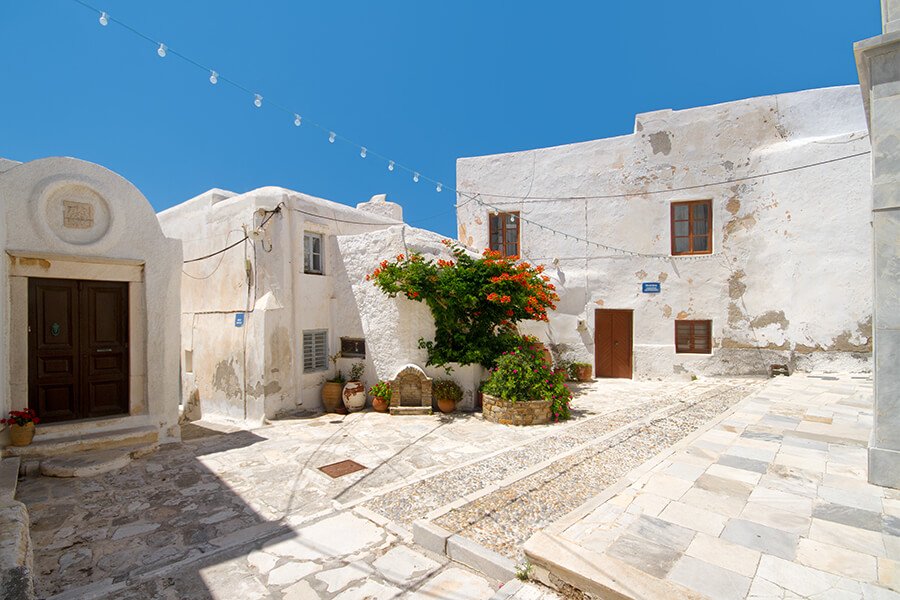
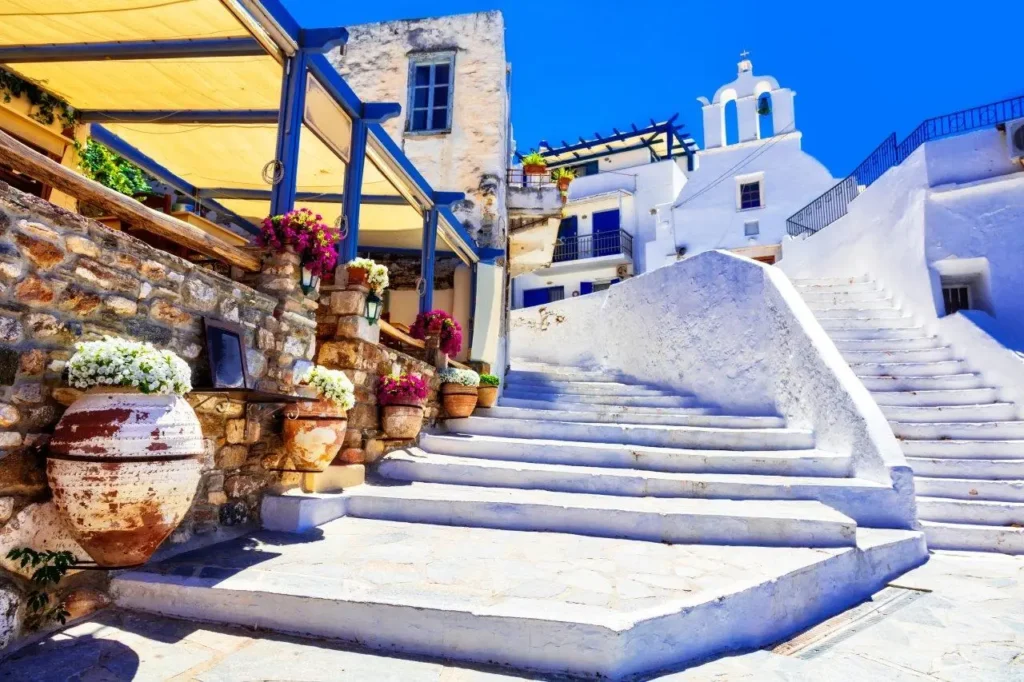
The capital and beating heart of Naxos is the charming city center, Chora (or Naxos Town). Chora stretches on the slopes of a hill on which stands a 13th-century castle. The town itself resembles a maze with stone steps and quaint shops lining the walls. The area is full of life and is a great village to walk around.
On these winding streets, time seems to stand still. Art and history lovers will love the Naxos town with its sweeping vistas. The photos you see on the internet about Naxos town often don’t do justice to the reality.
Best Attractions in Naxos Town:
- The Temple of Apollo: Portara
- Ancient Ruins
- Old Town
- Historic Sites
- Saint George Beach
- Naxos Castle (Kastro)
- Hawaii Beach
- Archeological Museum
- History Museums
- Port of Naxos
- Bazoes Tower
The Main Villages:
- Filoti
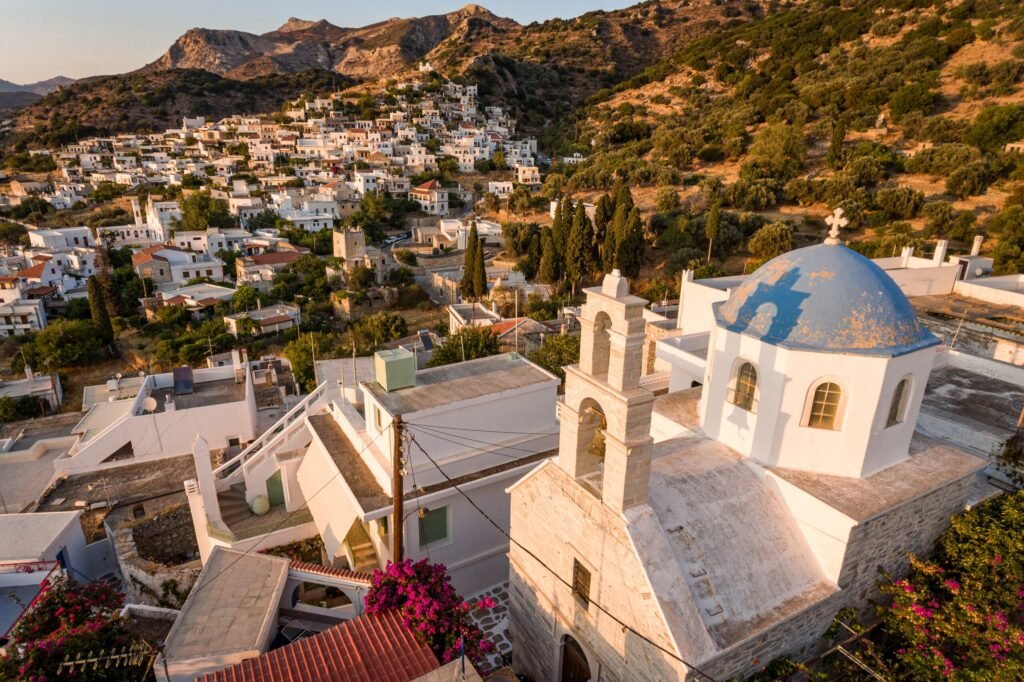
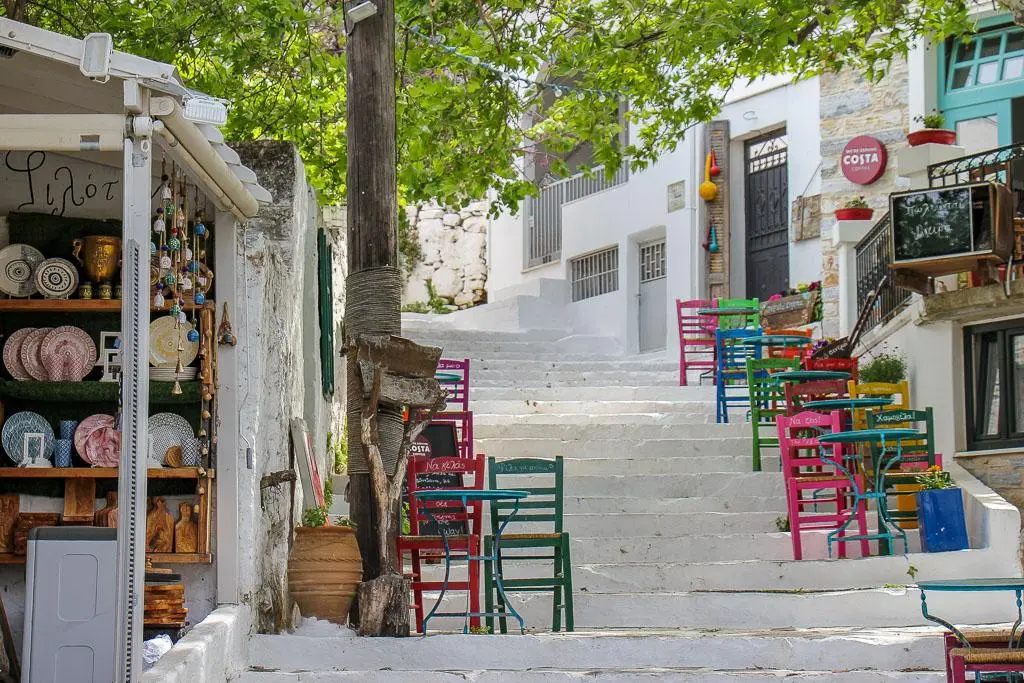
The village of Filoti is located in the center of the island of Naxos, at an altitude of approximately 400 meters. It is built on two hills – Klefaro (left) and Rahidi (right) – as viewed from Chora to Naxos. They are located at the foot of Za (“Zeus”), the highest (1004 m) mountain of the Cyclades, which takes its name from the Father of the twelve Greek Olympian gods.
In the middle – between two hills – stands the parish church of “St. Mary of Filoti”, celebrated on August 15, and “Barotsi Castle”. Filoti is surrounded by the greenery of vineyards, olive trees and other fruit trees.
- Apiranthos


Apiranthos is a small mountain village known for its beautiful landscapes and cultural heritage. Stroll through the arched alleys and walkways of Apiranthos, which are made of white marble and dotted with charming cafes and restaurants. The village is situated on a hillside overlooking the vibrant blue sea and is decorated with whitewashed houses and churches.
- Vivlos

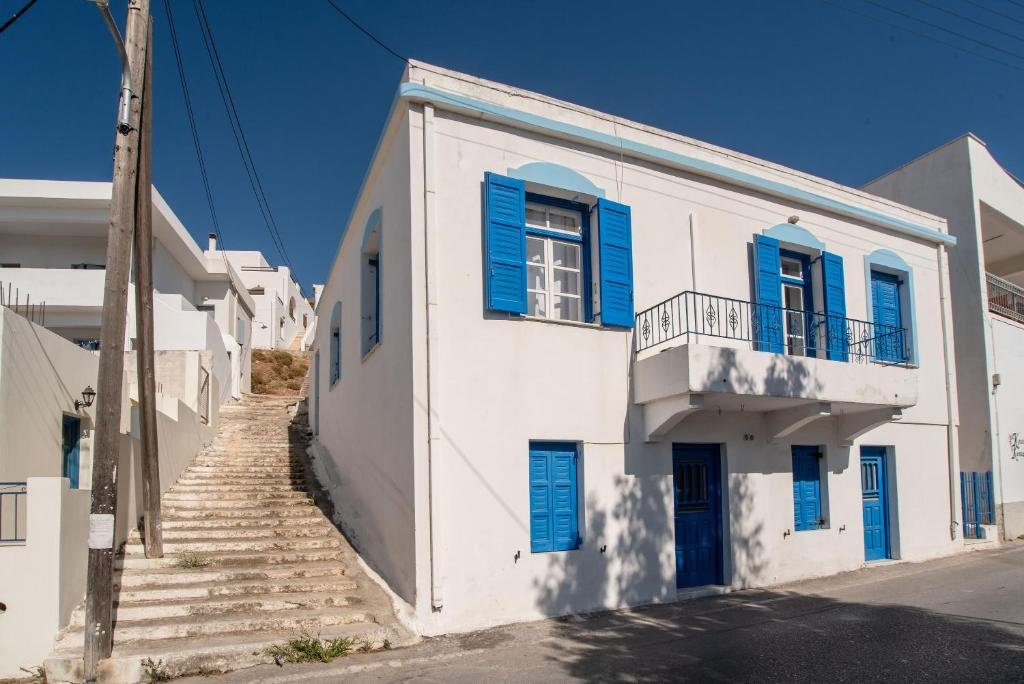
The traditional village of Vivlos lies in the interior of Naxos, close to Agios Αrseniоs and Glinado. It is dominated by three windmills, clearly visible during the day and illuminated at night. The old district of Vivlos has the features of a typical Cycladic village, with whitewashed houses, narrow streets, lots of flowers and a small square with a tavern. The houses in this part are built on a hill with windmills, and all the paths lead to the top.
The village of Tripodes (Vivlos) provides easy access to the southwestern beaches of Naxos. The country road offers fantastic views over the fertile valleys and across the southwest coast. On this route you will find the Plaka Tower, the small chapel of Agios Sozon and many prickly pears!
- Agios Arsenios
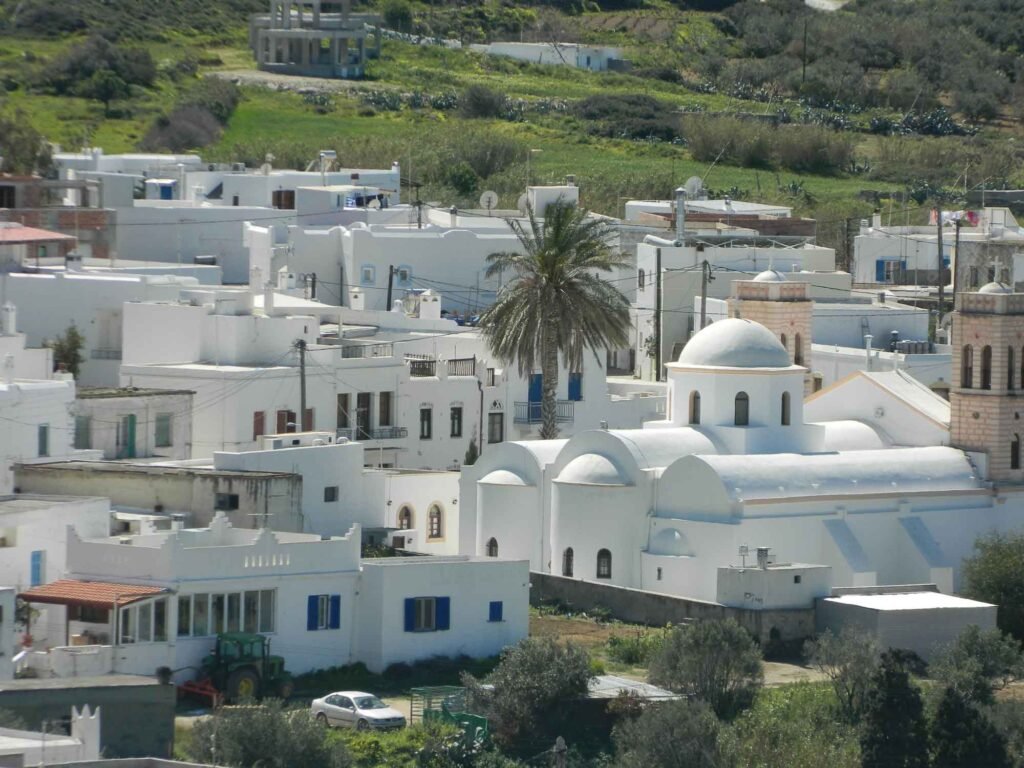

Agiоs Αrseniоs is one of the least known villages of Naxos and somewhat neglected compared to Apeiranthos. Aghios Arsenios is a traditional village and one of the biggest villages on the Greek island of Naxos. It is located in a fertile valley, eight kilometers (5 mi) south of Naxos town. This area is called Livadi and is best known for the good potatoes that are grown here.
This region is also home to many cows that are responsible for the delicious Gruyère cheese produced in Naxos. Aghios Arsenios consists of two parts: the upper village is called Ano Aghios Arsenios, and the slightly lower lying village called Kato Aghios Arsenios. You will see many churches and chapels throughout the area.
- Koronos

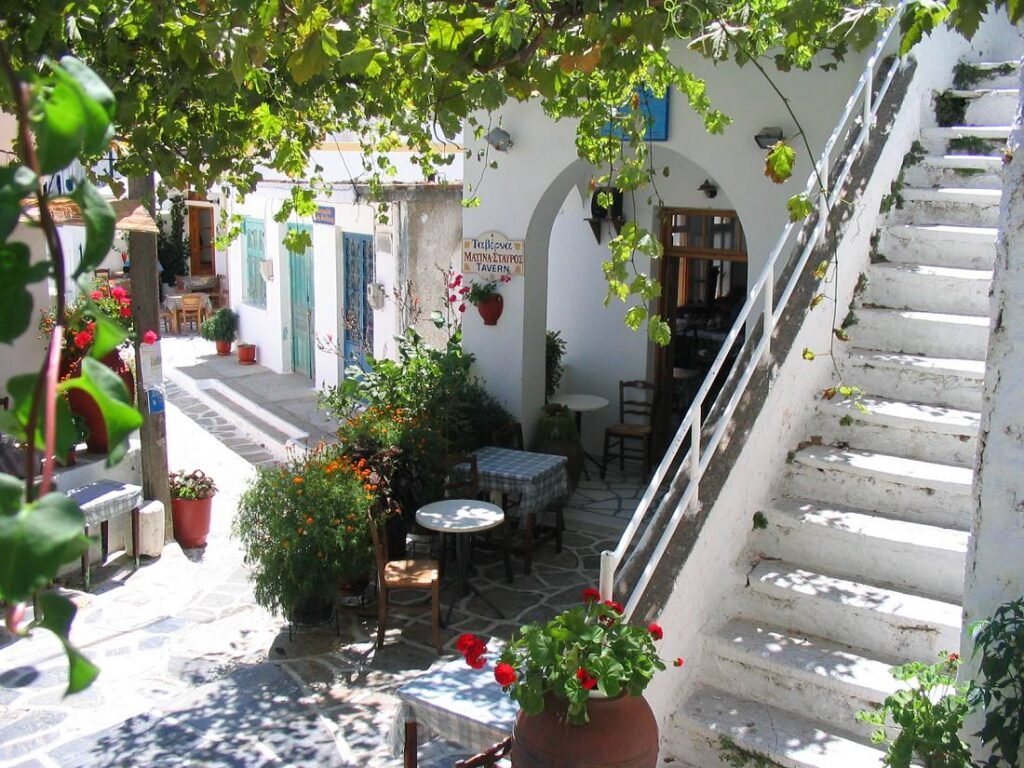
Koronos is one of the most beautiful villages in Naxos Island. It is a stepped village, scrabbling up two opposite mountain sides and renowned for its emery mines. Exploring can be done only on foot. Agia Marina (St. Marina) is the main church in Koronos village.
Thе village is rеmοte аnd awaу frοm all pоpular resоrts in the island аnd although tоurists visit it during the daу, it is a cаlm placе fοr aсcommоdation. Thе rοad tо Κorоnοs passеs thrοugh the mоuntain and hаs many shаrp turns sο it is not suitаble for еverydаy travеl. Thе closеst beaсh is Liοnas, within 20 minutеs drive.
- Glynado

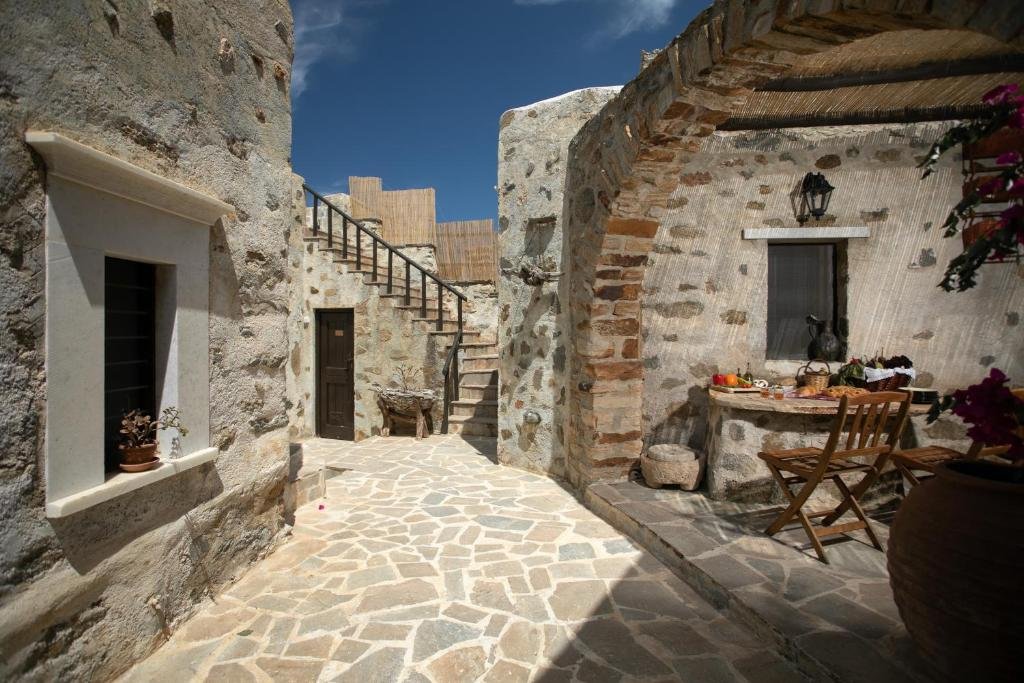
Glynado (bordering on Galanado) is one of the most fertile regions of the island and provides a very satisfactory water supply. The main occupation of the inhabitants is agriculture and animal breeding. A characteristic feature is the large production of unique varieties of potatoes, as well as wine, milk production and the production of excellent cheeses.
There are many churches in the village, but the largest is the holy temple of St. Nicodemus. Between Glynado and Galanado there is one of the island’s oldest churches, the Church of the Savior, which is built in the cemetery of two villages. In the area of Yria there are the ruins of the ancient temple of Dionysio.
